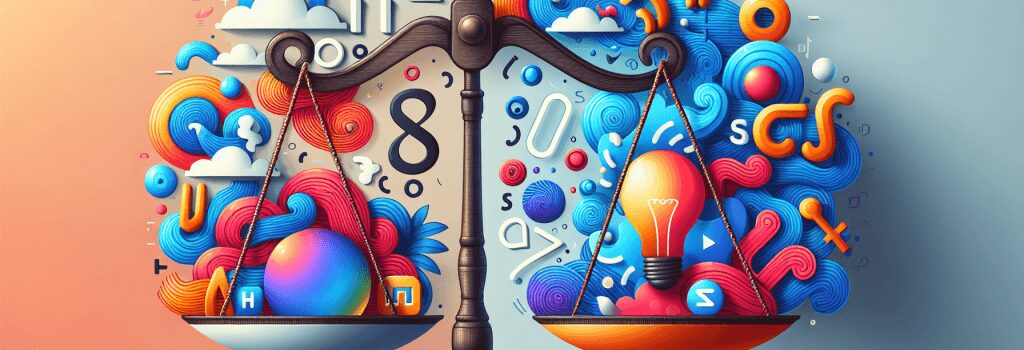Balancing Creativity and Functionality in Web Development

In the dynamic field of web development, striking the right balance between creativity and functionality emerges as a critical success factor. As we delve into this subject, we recognize how both elements serve pivotal roles in crafting websites that are not only visually appealing but also highly effective and user-friendly.
Understanding the Significance of Creativity in Web Development
Creativity in web development encapsulates the innovative and aesthetic aspect of building websites. It involves the imaginative use of color schemes, layouts, graphics, and animations to create an appealing and unique online presence. This creativity is not solely for the sake of artistry; it significantly impacts user engagement and the overall user experience.
Elevating User Experience with Creative Design
A creatively designed website captivates users, encouraging them to explore further. Intriguing layouts and interactive elements can make navigation an enjoyable experience, which is crucial in retaining visitors and reducing bounce rates. In this context, creativity goes beyond mere visuals; it includes the innovation in presenting content and making the interface as intuitive as possible for the user.
The Role of Functionality in Web Development
While creativity attracts users, functionality holds the key to their satisfaction and loyalty. Functionality in web development refers to the practical aspects of a website, including its load times, navigability, compatibility across different devices and browsers, and the overall user interface (UI).
Prioritizing User Needs Through Functional Design
Implementing functional design principles ensures that a website is accessible, easy to use, and provides value to its users. It encompasses the technical proficiency in coding and developing features such as responsive designs, optimized images, and effective content management systems (CMS) like WordPress.
Balancing Creativity and Functionality
Achieving a balance between creativity and functionality means that web developers must fulfill user expectations on two fronts: providing an engaging visual experience and delivering a seamless, efficient user journey. Here are key strategies to maintain this equilibrium:
Establish Clear Objectives
Begin by understanding the purpose of the website and the needs of its target audience. This clarity will guide the creative and functional aspects of the development process, ensuring they align with the end goals.
Adopt a Responsive Design Approach
A responsive design not only addresses the functional requirement of device compatibility but also offers creative opportunities through dynamic layouts and adaptable visual elements.
Optimize Performance Without Compromising Design
Leverage optimization techniques such as compressing images and utilizing efficient coding practices to ensure the website loads quickly without sacrificing its aesthetic quality.
Ensure Intuitive Navigation
An intuitively designed navigation system is essential. It should creatively align with the overall design while providing users with an easy way to explore the website’s content.
Test and Iterate
User testing is vital in balancing creativity and functionality. Gather feedback on both the design and usability aspects of the website, and be prepared to make iterative improvements.
In conclusion, mastering the balance between creativity and functionality is a nuanced process that requires attention to detail, an understanding of user behavior, and a commitment to continuous learning and improvement. By valuing both aesthetic appeal and practical utility, web developers can create memorable websites that stand out in the digital landscape while providing users with a rewarding online experience.


